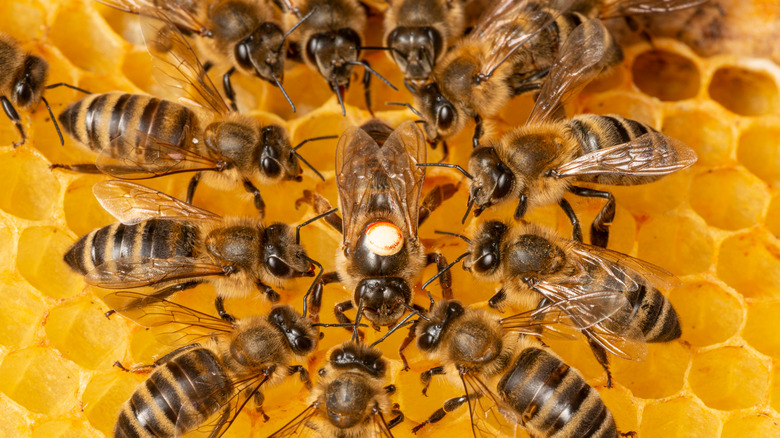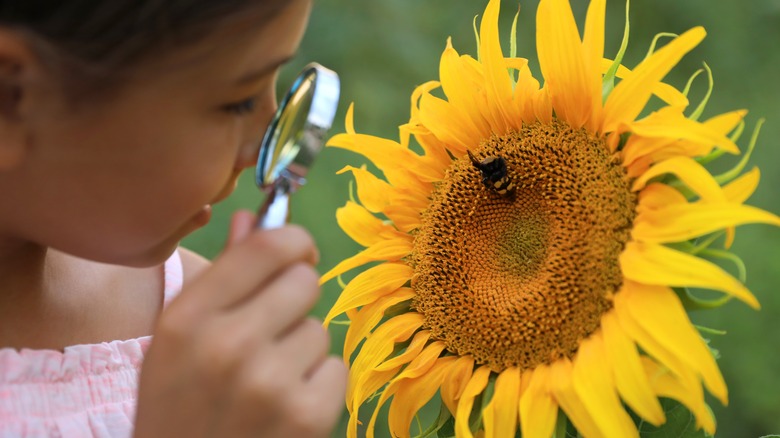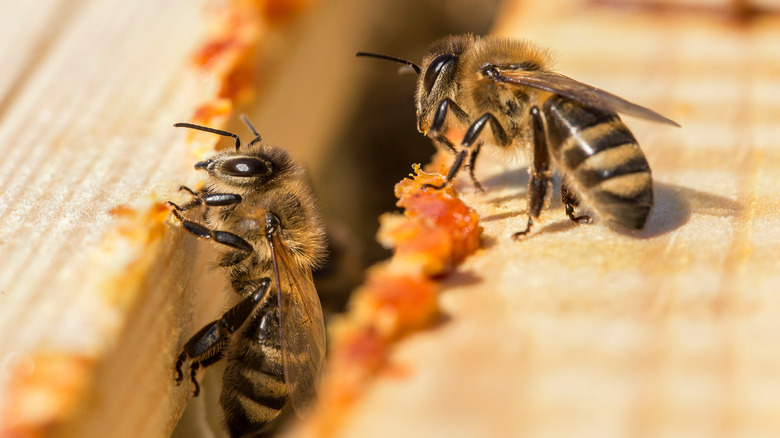Where Do Bees Go During The Winter?
During the course of our humanity-centric lives, we often don't spare a thought for the actions of other species. After all, we're the only ones who have to contend with overtime, tax returns, grocery shopping and the like. Compared to all of this, the scurrying and buzzing of insects and other tiny species are ... well, just that: tiny, right?
As it happens, though, these little creatures absolutely can't be taken for granted. Without bees, for instance, it seems that life as we know it could cease to exist.
According to The Bee Conservancy, the honeybee's efforts are worth $15 billion to United States crop production, and bees pollinate one-third of the crucial foodstuffs we rely on. The sight of these buzzy buddies going about their business, then, should fill us with joy. Seeing them happily moving from flower to flower is an idyllic summer memory for many around the world. When the weather turns colder, though, they're nowhere to be seen.
Bees huddle together in their hives for warmth
Just like us humans, the iconic honeybees don't tend to cope very well with cold temperatures. Since our distant ancestors first started huddling around fires, we've been taking advantage of a wide array of creative ways to keep ourselves warm, and we have some rather high-tech heating systems today.
During the infancy of the human race, we quickly learned the importance of social bonds. From continuing the species to group protection, cooperation improved our chances of survival. If nothing else, we produce quite a lot of body heat, and close-knit communities certainly feel the benefits of this when the temperature drops.
Honeybees are just one example of this. As Britannica reports, huddling together tends to be the key to honeybee communities' survival during harsh weather. At around 50 degrees Fahrenheit (10 degrees Celsius), swarms huddle together in their hives. By grouping together and shivering much as we would, the worker bees keep themselves warm enough to survive. Not only do they keep themselves alive in the fashion, but the precious queen, too. It's a tremendous, constant effort that lasts the whole season, with members of the colony only leaving very briefly when the temperature allows. These winter bees, according to the website, are a little larger and live longer lives than the summer bees, in order to keep up this vital work throughout the cold months.
Bees save themselves and they save us
Britannica goes on to state that success with this technique relies on the fact that the honeybees were able to stockpile sufficient quantities of honey in time for the great winter buzz-ball, for the busy critters to survive on. Failure in this endeavor may result in the entire colony being destroyed. The male bees all suffer this sad fate anyway, leaving the female workers to ensure their own and the queen's survival during this chilly time.
A 2006 study titled "Importance of pollinators in changing landscapes for world crops," from Alexandra-Maria Klein et al (via The Royal Society Publishing), states that "fruit, vegetable or seed production from 87 of the leading global food crops is dependent upon animal pollination." Of course, this isn't solely the work of bees, but the busy little insects have a huge and vital part to play. The world should be thankful, then, that they have such an effective way of keeping themselves safe in harsh winters. Even if it does mean that they vanish from sight during the coldest times.
Per National Geographic, Japanese bees can defeat giant hornets (much larger and more powerful than themselves) by piling on them in numbers and producing an overwhelming level of carbon dioxide. Additionally, the defensive bees generate heat using muscles in their wings. By so doing, they can cook their foe at 113 degrees Fahrenheit (45 degrees Celsius). Here, again, are bees demonstrating their proficiency for heat-generating teamwork.


